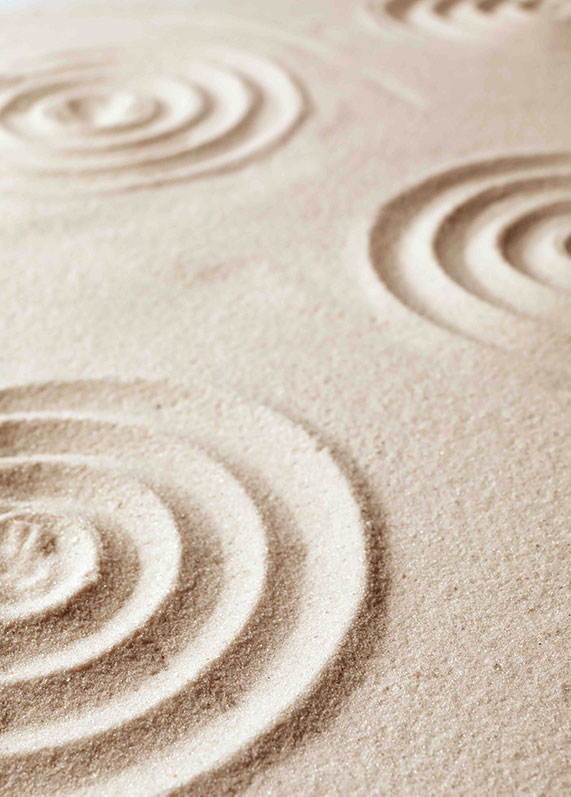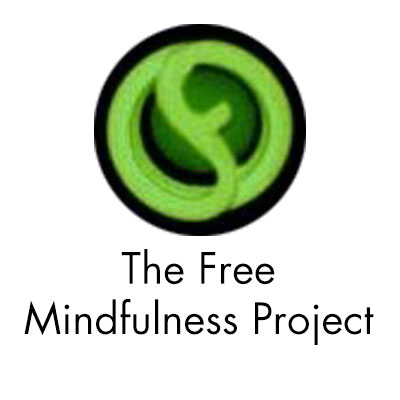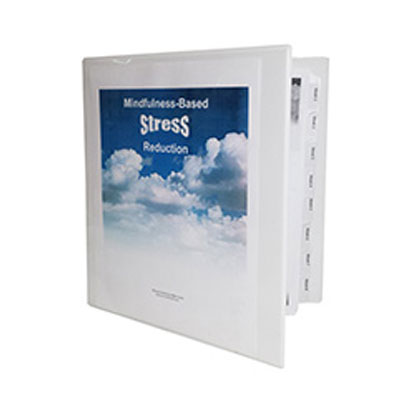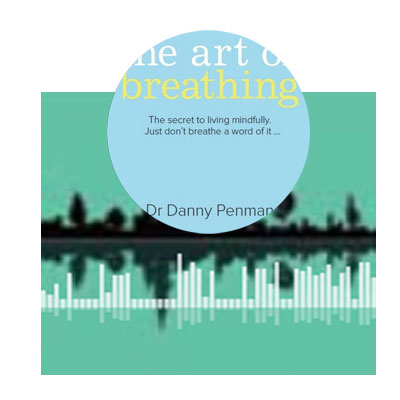
Mindfulness
What Is Mindfulness?
If you pay attention to what your mind is up to, you’ll probably notice that it’s either thinking about something from the past or imagining something in the future. Rarely are we focused on what’s happening right now.
You’ll probably also find that you’re wishing things were different than they are—better somehow. Or if you’re enjoying yourself, you’re hoping to keep feeling this way. In one way or another we’re usually trying to force life to behave as we want it to.
There’s an alternative to living in the past or the future, and constantly judging and trying to control our experience. We can choose instead to bring our attention into the present, on purpose. Once we arrive in the present we can allow ourselves to open to our experience just as it is.
Most of us probably can remember times we’ve really been in the moment, doing exactly what we were doing and not wishing it to be anything other than it was. Those moments tend to stand out, and for good reason—they’re rare, and we feel so content.
“Mindfulness” is a word that’s been applied to experience. Nobody invented this state of being, it’s simply an experience that’s available to everyone. While it’s become a cornerstone of some major religions like Buddhism, there’s nothing inherently religious or “new age” about being in the present with openness and curiosity.
Why Be Mindful?
It’s easy to turn anything into a burdensome and moralistic obligation, and mindfulness is no exception. But mindfulness practice is not about should or ought. In my view, a heavy-handed approach is antithetical to the principles of mindfulness. The practice needs to come from our own desire.
So why might we want to practice mindfulness? The simplest answer is that it helps us be more fully in our lives. If we rarely take in what’s in front of us, we miss most of what’s happening. Thus we risk only half living our limited time on this earth.
Constantly wishing things were different also leads to unnecessary stress and unhappiness. For example, imagine you’re caught in a rain storm without an umbrella. You could curse the meteorologists for getting the forecast wrong, or rage against how inconvenient it is that you’re getting wet. These would be very normal and understandable responses. And imagine if instead you let yourself smell the wetness of the rain in the air, feel the raindrops on your face, listen to the cars on the wet blacktop, see the drops as they dotted the sidewalk…. While the weather wouldn’t have changed and you’d be no drier, your relationship with your experience would be different. Chances are you’d be less unhappy in the rain.
This is not to say we have to like unpleasant circumstances, or not change them if we can. But we can resist the urge to make a situation worse by struggling futilely against it.
In addition to these general reasons to practice mindful presence, countless research studies have found that mindfulness helps with a long and growing list of conditions—for example, insomnia, stress, depression, anxiety, chronic pain, worry, obsessive-compulsive disorder, and many more. If you practice mindfulness, chances are you’ll be happier and more fulfilled.
[Mind the Gap: Avoiding Destructive Trains of Thought on Psychology Today blog]
Not only will we be better off ourselves, but our relationships are likely to benefit, too. Who doesn’t prefer that the person we’re talking to is fully present, rather than listening with only one ear? We’re also more likely to see and respond to others’ needs if we practice mindfulness.
[Presence, Pain, and Compassion on Psychology Today blog]
So while nothing says we have to practice being mindful, there are plenty of reasons to do so.
What Is Mindfulness Practice?
It’s hard to remember to be present with openness—countless distractions, irritations, and fears pull us out of this moment and lull us back into semi-conscious sleepwalking. Only with consistent intention and practice can we spend more time being mentally and spiritually awake.
Two forms of practice can support this intention:
Mindfulness in Action. We can intentionally bring our focus to any activity we’re doing. Being in our experience means more than “knowing what I’m doing”—we can practice a heightened awareness of our senses and our internal states.
For example, even a simple daily activity like bathing can be done mindfully. While showering we can pay attention to the sound of the water, the feel of the air, the scent of the shampoo, the sensation of our feet on the bottom of the stall, and the water running down our bodies.
[Why Your Time in the Shower Is Vital to the Rest of Your Day on Psychology Today blog]
There are a few key points we can keep in mind as we practice being in the moment:
- Notice when you’re feeling pressed to finish what you’re doing as quickly as possible. It’s easy to move from activity to activity with a constant sense of needing to get to the next thing, which then becomes the activity we have to get through. We can practice being patient, letting activities take as long as they take.
- Be aware of resisting what’s happening. If you’re having a difficult and necessary conversation, for example, you might find yourself wishing it away or thinking, “I shouldn’t have to be doing this.” When we notice we’re resisting reality, we have an opportunity to simply let our experience be what it is. “This is really uncomfortable,” we might acknowledge—“no more, no less.” Being willing to be in our life just as it is leads to less unhappiness and greater flexibility.
- In a similar way, notice when you’re grasping or clinging to an experience you’re enjoying. For example, it’s easy to dread the end of vacation and returning to the stress and busyness of work. When we’re focused on not wanting our experience to end, we’re already anticipating its loss, and living in an imagined worse future. Part of being in our experience is opening to endings—realizing that nothing, pleasant or unpleasant, lasts forever.
- Bring fresh eyes to the activity. If you’re having a conversation, really look at the person, as though you’re seeing him or her for the first time. If you’re walking, open to the sights, sounds, smells, and the feel of the sun or wind on your face—again, as though you’ve never walked before, never visited this planet before. Even activities we’ve done a thousand times are never exactly the same, especially when we’re aware and present.
Formal Mindfulness Exercises. There are several more structured practices that are associated with mindfulness training. Perhaps the most obvious example is meditation. There are countless ways to meditate, which involves focusing the mind as much as possible on a specific target. Most commonly the target is the breath; it could also be the sounds you hear, something you’re looking at, other sensations in your body, or anything else.
Some people prefer more active forms of mindfulness training, such as yoga—a series of poses with deliberate attention on the body and breath—or tai chi, a series of (often slow) movements done with intention and focus.
[Seven Ways Yoga Lowers Stress and Anxiety on Psychology Today blog]
For most people these focused sessions of mindfulness practice take considerable mental energy. It’s hard work to sit in meditation and continually bring our focus back to our breathing, and it’s challenging to stay present and open in yoga when we’re up against our physical edge.
At the same time, these practices provide a concentrated dose of mindfulness practice that can increase our day-to-day awareness outside of times when we’re practicing. We’ll probably increase our ability to recognize when we’re not present. We might start to find ourselves keenly aware of the present even when we weren’t trying to be.
If you’re interested in starting a formal practice in mindfulness, it’s a good idea to start small. Rather than trying to meditate for 30 minutes every day, we might begin with 5 minutes 5 times a week, for example. There are multiple obstacles to practicing mindfulness, so it’s helpful to make it as easy as possible to get started.
[Why You Don’t Want to Meditate, and 5 Ways to Make It Easier on Psychology Today blog]
Additional Resources
The Free Mindfulness Project
The aim of The Free Mindfulness Project is to provide easy and free access to mindfulness meditation exercises by inviting the wider mindfulness community to share their resources here.” They feature a range of free guided meditations and information about the practice of mindfulness.
Free Online Mindfulness-Based Stress Reduction (MBSR) 8-Week Program
MBSR was developed and popularized by Dr. Jon Kabat-Zinn, and is highly effective at reducing stress and anxiety through the practice of mindfulness and meditation. Dave Potter is a certified MBSR instructor and has created a free online course to make the training as widely available as possible.



